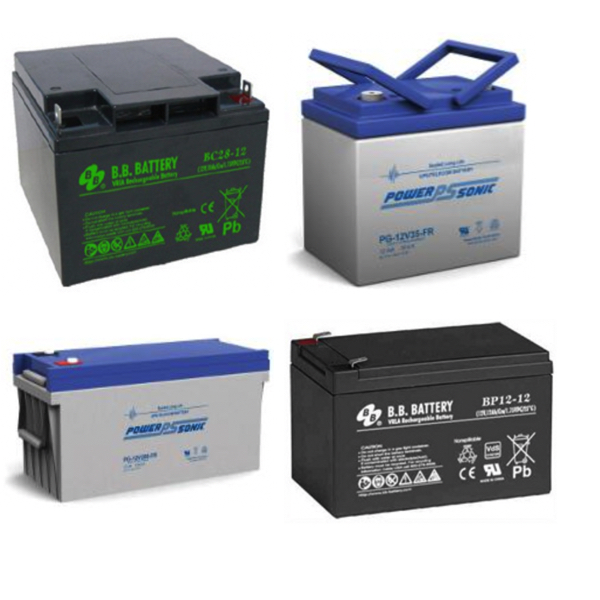General Purpose Batteries

A battery is a chemical device that stores electrical energy and converts it into direct current (DC). All batteries can be divided into two categories: primary (non-rechargeable) and secondary (rechargeable). Primary batteries are used once and discarded after discharge. Secondary batteries can be electrically recharged after being discharged. Secondary batteries can be used as energy storage devices that are connected and charged by a main energy source and then used to supply energy when needed. They can also be used as a primary battery, which can be recharged by a charging mechanism when almost fully discharged.
The most commonly used rechargeable batteries are lead-acid batteries. The two types of lead-acid batteries are referred to as flooded and sealed. Flooded batteries are widely used in the automotive industry and are known as SLI (Starting, Lighting and Ignition) batteries. Sealed batteries are commonly known as VRLA (Valve Regulated Lead Acid) and SLA (Sealed Lead Acid) and are used in energy storage, emergency lighting systems, emergency power, communication systems and electric cars.
General purpose batteries are VRLA batteries and have a capacity of 4V, 6V and 12V. The life of the battery as well as the amp hours, life cycles and depth of discharge will vary depending on the battery selected and under what conditions it will be used.
How to wire batteries in either series or parallel and battery selection criteria
- Voltage requirement of the load. Most batteries produce 12 Volts DC, so if the load requires more than 12 Volts, this can dictate how many batteries to use and how to wire those batteries.
- Capacity of the battery. This is measured in AMP hours. Each battery has a specific AMP hour rating. For example, a battery that has a 10 AMP hour rating means that battery will supply power at one amp for 10 hours, or another way to look at it might be that a 10 AMP hour battery can supply 10 amps for one hour.
- Number of batteries needed. Once the voltage and capacity requirements of the system are known, the number of batteries and wiring configuration can be determined.
Let's assume we have a basic 12 Volt system. In this case, we would only need one 12 Volt battery. Let's assume we have a 24 Volt system. In this case, we would need two 12 Volt batteries to produce that 24 Volts. In order to produce the 24 Volt that is required, we need to wire these batteries in series. We first take our negative terminal on battery one and wire that to our DC negative bus. Then on the same battery, we wire the positive terminal to the negative terminal on battery two. We then take the positive terminal on battery two and wire that to our load.
Keep in mind, when wiring in series, we are simply increasing the voltage of our system. However, this does not increase the AMP hour rating or capacity of our system. So we have two batteries wired in series that increase the voltage to 24 Volts, but we still have a 7.5 AMP hour rating.
Let's look at another example where we need to keep the voltage the same but we need to increase our capacity or AMP hour rating. In this scenario, we have two 12 Volt batteries. In order to increase our capacity, we need to wire these batteries in parallel. On battery one from the DC negative bus, we wire to the negative terminal. From battery one, we wire also to the negative terminal on battery two. The positive terminal on battery one is wired to our load as well as to the positive terminal on battery two. In parallel, we wire negative to negative and positive to positive. This will increase the capacity or AMP hour rating of our system, but it will not increase the voltage rating of our system.

